




Here you will find a brief Historical Analysis and Photographic Documentation of the American Federal Navy's Baltimore Pattern of Naval Cutlass.
Shortly after the Revolutionary War the newly formed United States of America found it necessary to begin building its first fleet of US-manufactured ships. Along with the ships themselves an entire array of weapons was also needed to be provided, including naval cutlasses for the enlisted crew.
The newly formed Federal Navy (forerunner of the U.S. Navy) copied the naval cutlass design used by the British Royal Navy throughout the Revolutionary War. This new pattern of American cultass is now known as the "1797 Pattern" of which the "Baltimore" is a variant. Most of the post-Revolutionary War cutlasses were of a turned wooden grip with a figure eight hilt and straight blade, however the "Baltimore" pattern used a metal ribbed grip, figure eight hilt, and a curved flat blade with a clipped tip.

The reason this particular naval cutlass is designated the "Baltimore Pattern" is that at least 2 to 3 of these exactly patterned cutlasses were either found in Baltimore or had known original roots there. As was the custom back in the 18th and 19th centuries whenever a naval ship was decommissioned all of its onboard goods and armament were sold at that local port as salvage or military surplus.
It is reasoned that after the War of 1812 (and possibly even the Barbary Pirate Wars lasting to 1815) an American Federal Navy vessel was decommissioned in Baltimore which was a major seaport and harbor for the newly formed American Navy. As was custom these cutlasses were then sold onto the open market as part of the decommissioning process.
Each of the Baltimore patterned cutlasses were exactly the same with a broad, wide, curved flat blade without fuller and a clipped point without any false edge. Additionally they are all stamped with a capital "P" on the reverse side of the blade. The stamped "P" was a throwback to the British Naval inspection process and stood for "Proof".
The grip was of cast iron and ribbed (similar to ones found on the British 1804 cutlass), and the guard is cut from thick sheet iron in a figure eight design and of similar design to the British Navy's cutlass used throughout the Revolutionary War and on the 1804 pattern. Both the grip, guard and blade are of slightly better quality and craftsmanship than the other American-made cutlasses of the 1797 pattern.
Also, the center or bottom lobe of the hilt had the stamped letters "US", similar to the other American-made cutlasses and signifying that this was for military use.
All in all, the "Baltimore Pattern" naval cutlass is by far the more elegant of all of the cutlasses of this period, both British and American!
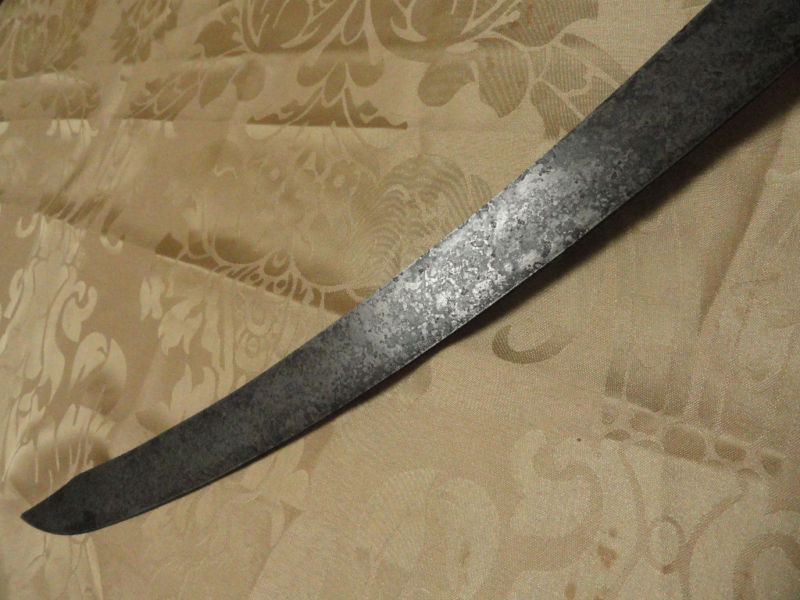
Note the curved blade and clipped point above, without a false blade. (very similar to the clipped blade found on the US Navy's Model M1917 naval cutlass 100 years later).

Obverse side of the Balitmore Pattern naval cutlass
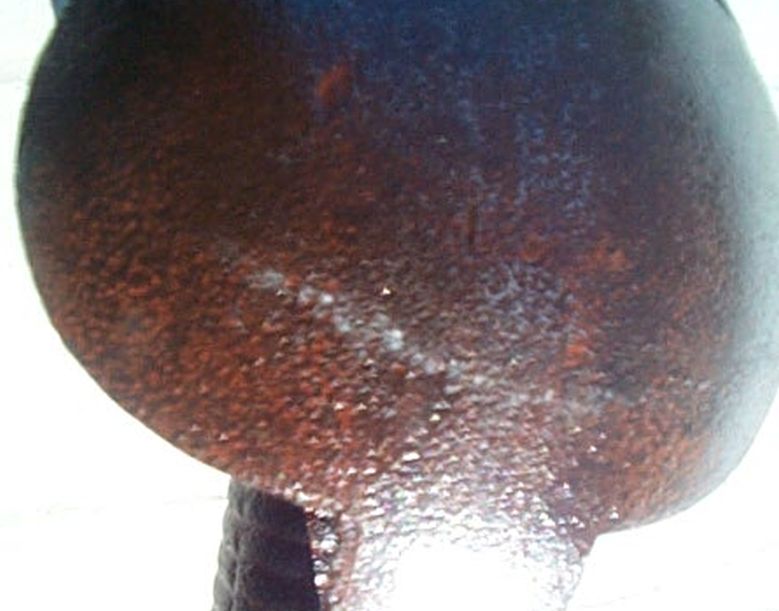
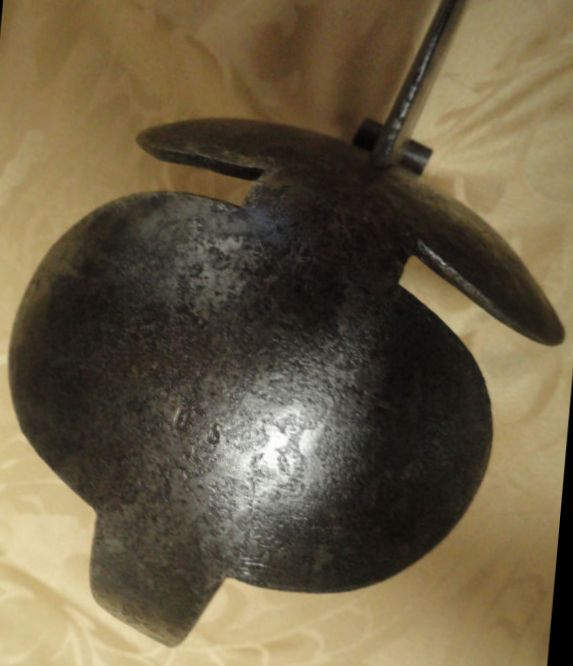
Authentic Baltimore Pattern in the left photo and a 1980s counterfeit to the right. Note the difference in size and font type with the stamp on the right from two separate strikes making the letters uneven and too wide.
Note the large initials "US" in 19th century serif font style stamped onto the lower lobe of the figure eight hilt. Similarly stamped to other period post-Revolution 1797 pattern naval cutlasses and exactly like other found Baltimore pattern cutlasses. In the 1980s there was a swordsmith in the mid-west who counterfieted both the Starr M1826 and Baltimore Pattern cutlasses. These counterfiets were of exceptional quality and accuracy.
However one of the faults in regards to the Baltimore Pattern was that the stamped "US" on the lower lobe was much smaller than that found on the authentic one, and it used the modern day "sans serif" font die.
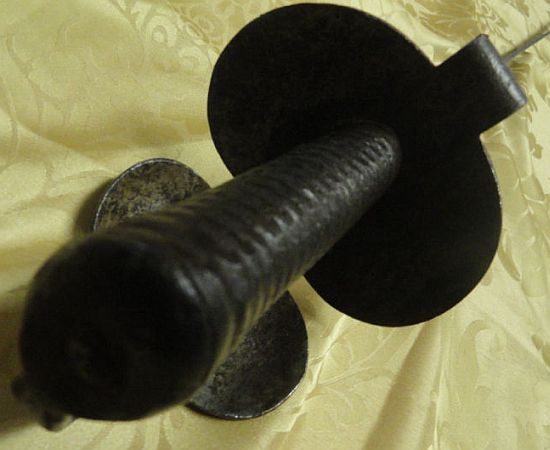
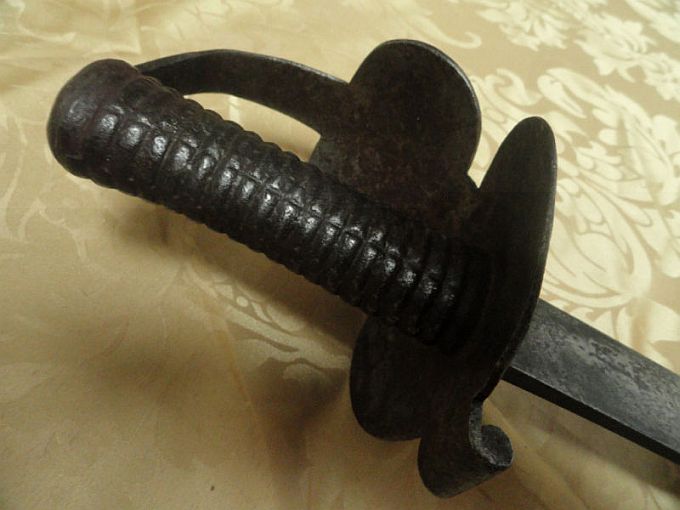
Above photos illustrate the plain pommel, ribbed cast iron metal grip similar to the British 1804 pattern cutlass, and the figure eight sheet metal guard used by the British throughout the Revolutionary War, British 1804 Pattern Cutlass, and on the American 1797 Pattern. It is very concievable that the British copied this all metal ribbed grip from us and used it on their 1804 Pattern! .
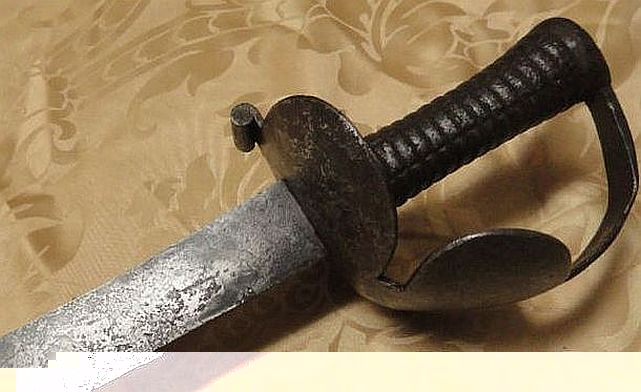
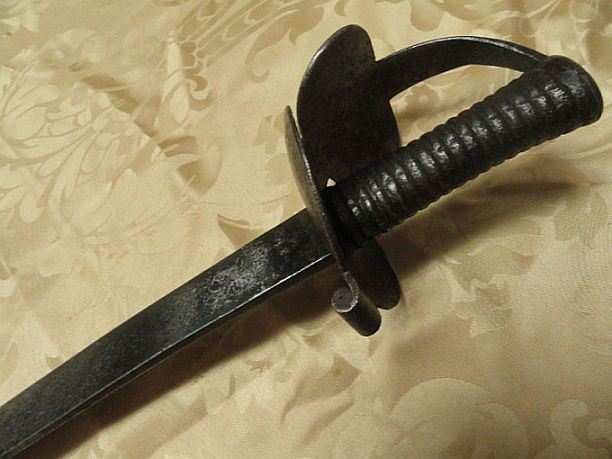
Reverse and Obverse sides of the hilt and blade. Not the thick and wide curved quillon. The entire hilt on the Baltimore pattern was blackened, and much of this is still seen on this particular cutlass.
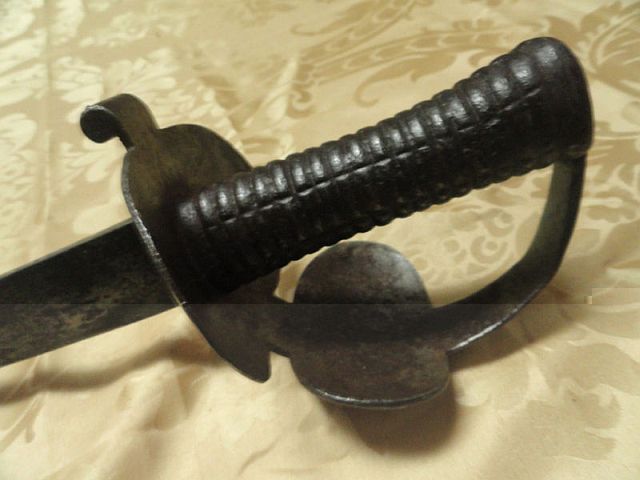
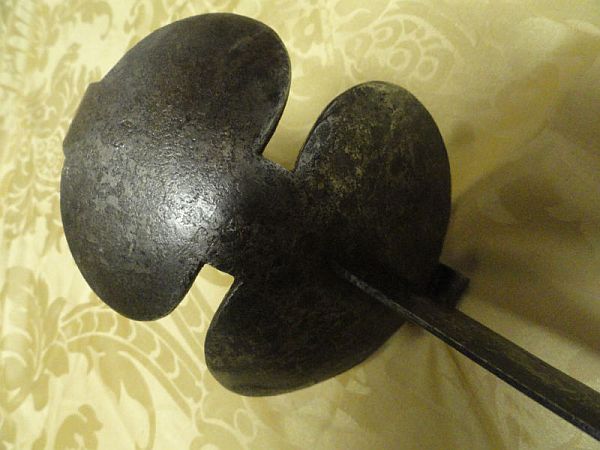
Excellent photos of the figure eight characterstic of the late 18th century and early 19th century American and British hilts found on their respective naval cutlasses.
Most experts now agree that the ribbed all metal grip found on the British Royal Navy 1804 Pattern cutlass was designed from the American Navy's "Baltimore" pattern cutlass was produced prior to the British pattern, and thereof copied. Also the Starr Contracts and 1797 Pattern of US Navy cutlass were still using the round, smooth all metal grip similar to the pre-1804 British cutlass pattern. It is worthy to note that there have been found some "Baltimore Pattern" cutlasses with a turned wooden walnut grip.
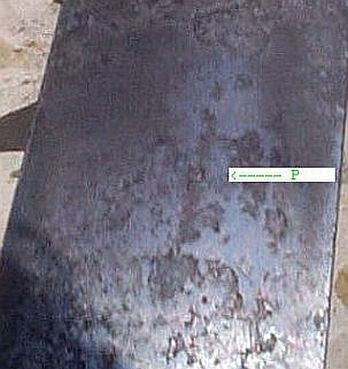
Here you will see the stamped capital "P" found on the reverse side of the blade. The P represents Proof which was originally used by the British Navy during the 17th and 18th centuries. This stamped P was as an indication that the stamped naval equipment was tested by an inspector, or "Proofed", and accepted for use by the Royal Navy. Sometimes a stamped arrow was also used.
This ends the analysis of the unique American Navy "Baltimore Pattern" Cutlass used during the War of 1812 and the Barbary Pirate Wars during the early parts of the 19th Century.
| The Real Deal! Fully Restored Antique Trunks Like Sea Chests, Pirate Chests, Treasure Chests! |
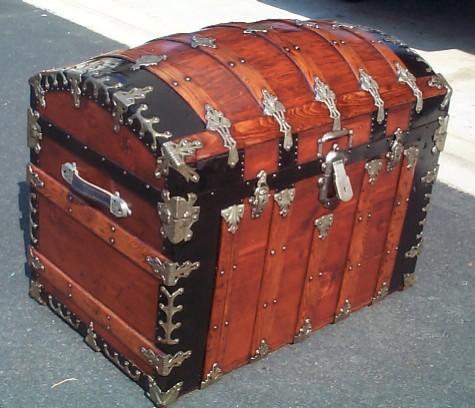 Click Here To Review Sample Engravings |
|
| Custom Designed, Handcrafted, and Hand Lettered in Caligraphy on your Antique Chest |
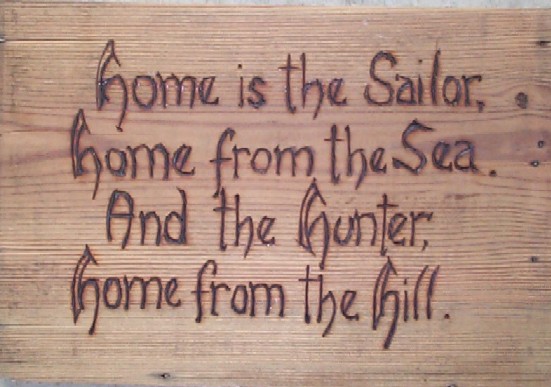 Click Here To Review Sample Engravings |
|
| Customer Photographic Examples of our Antique Trunks Being used as a Military or Naval Retirement Shadow Box and Storage Chest!! |
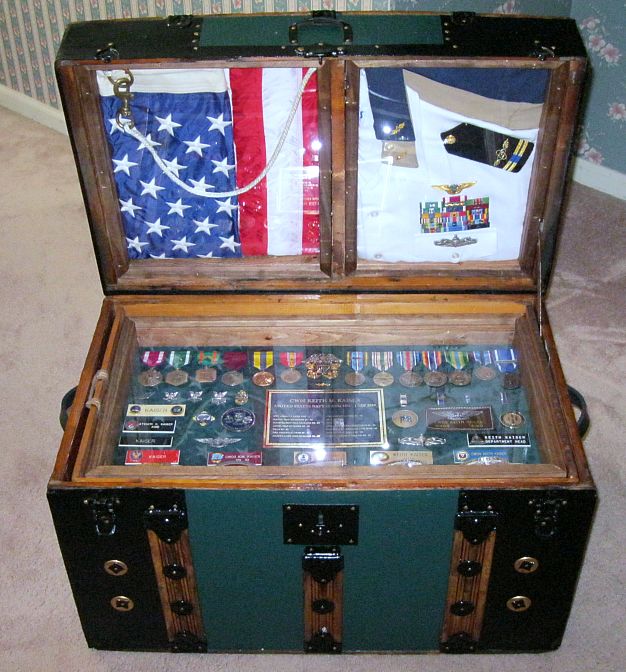 Click Here for Sample Shadow Box Photographs From Customers |
|